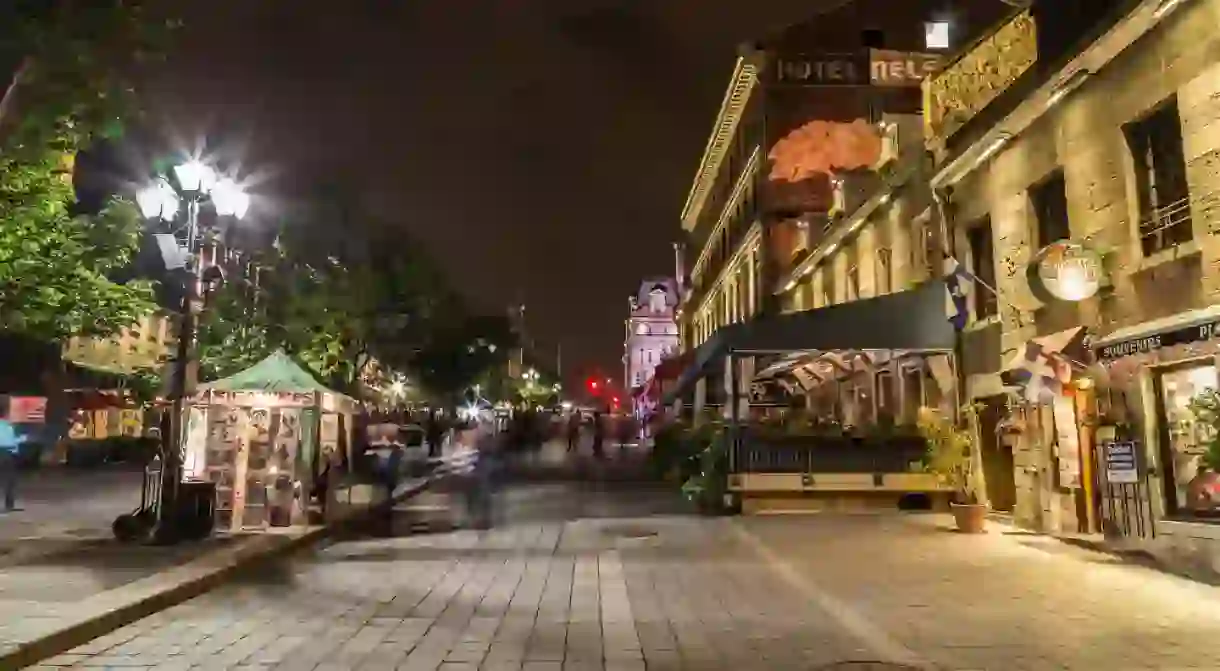Montreal’s Underground City: How to Get There & What to Do

With its intriguing name, the Underground City in Montreal might bring to mind a labyrinth of hidden passages that create a fully developed city below street level. Locally referred to as RÉSO (for réseau, the French word for network), it’s an integral part of Montreal’s downtown core—though it might be better to call it an “indoor city,” as much of it is not actually underground.

The Underground City constitutes a multi-level network of tunnels and stairways that connect various shopping malls, metro stations, offices, hotels, libraries, schools, concert halls, and restaurants. Around 500,000 people make use of the network every day.
Past and present
The history of the Underground City started in 1962, the year when the first interconnected sections were constructed. When Montreal’s subway system began operating in 1966, further connections were built. Urban planners designed it with the idea that this extensive indoor access area would reduce downtown traffic while also offering a way for pedestrians to circulate inside without having to go outdoors—especially during the harsh winters when temperatures can drop below -20°C (-4°F).
Today more than 33 kilometers (20.5 miles) of tunnels span the network, which covers over 12 square kilometers (4.6 sq mi) of the most densely populated area of the city. These underground passages create a vast indoor maze of sorts that at first glance looks like a giant shopping mall—but it has developed haphazardly throughout the decades and incorporates much of the most important artistic and cultural venues in Montreal.
How to get there
It’s so easy to access the Underground City that you’ll probably not even realize that you’re already there. There are more than 190 exterior access points to the network, including malls (such as the Eaton Centre and the Complexe Desjardins), metro stations, and even museums. The most central section, in the downtown core, is demarcated by metro stations Peel and Place-des-Arts on the Green Line, and stations Lucien-L’Allier and Place-d’Armes on the Orange Line.
Throughout the network, you’ll find schematics with the RÉSO logo to guide you—though it’s easy to get disoriented along the way. After all, it connects to 10 metro stations, two bus terminals, over 1,000 offices and 2,000 stores, 200 restaurants, nine hotels, four universities, 40 cinemas and other entertainment venues, and so much more.
What to do
Shop till you drop! Yes, one of the most obvious activities to enjoy throughout the Underground City is shopping, since the complex incorporates a total of six different shopping centers. Additionally, however, you can catch a movie at the Scotiabank Theatre or visit the Musée d’art contemporain de Montreal, which is connected via Place-des-Arts metro station.
At the same time, there are other fascinating things to see. Historic buildings have been repurposed and incorporated into the RÉSO network. The Cours Mont-Royal, for example, is now a chic shopping mall that was once the luxurious Mount Royal Hotel. In the early 20th century, this was the largest hotel in the British Empire, with more than 1,100 rooms. Nowadays, a former outdoor courtyard of the hotel has been transformed into the shopping mall.
As you walk through the various layers of this vast indoor network, then, you will be able to engage with both the past and present of Montreal’s urban design.
Although it might be a bit disappointing to visitors who are expecting something a little more mythical, the Underground City adds another layer to Montreal’s creativity and diversity, which is also linked to the culture of shopping and consumption in the downtown core.
If after all of that exploring of the Underground City, you might want to venture out further afield (and above ground) to experience some of the other amazing sights and experiences that Montreal has to offer its visitors.
Check out these tours >> Montreal, Montreal Culinary Tours, City Tours & Montreal Cruises & Sailing.













